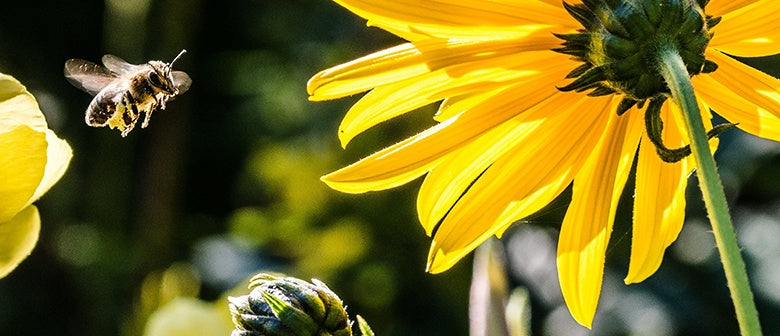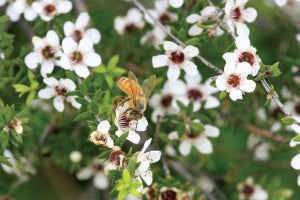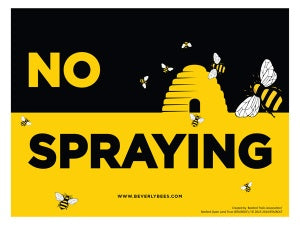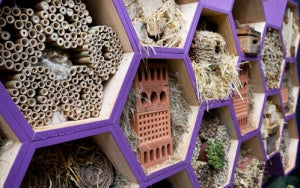Create a bee friendly backyard! Bees need all the help they can get and you can make a big difference just by creating a bee-friendly space in your garden. (And it’s not hard — bees are easy to please!).
Here are our top 5 tips for creating a bee friendly backyard:
1. Plant the right flowers
Bees like flowers that make good landing platforms or tubular flowers with nectar at the base – think daises, dandelions or snapdragons. Many of the new hybrid varieties are bred for showy colour displays, but have very little pollen and nectar (some are even bred specifically to shed less pollen for less mess).
Plants with flower spikes are also enjoyed, as the bees can move from flower to flower very quickly – think catnip for bees!
Blue and yellow are favorite bee colours. Bees can’t see red! White Dutch clover and other flowering ground covers provide a grass alternative that can create a bee oasis in the smallest yard.
Whenever possible, try to incorporate native plants into your landscape. They are already adapted to your area, and many perennial species bloom very early or late in the season, before or after annual flowers are at their prime.
2. Use Trees and Shrubs to Help Provide Pollen and Nectar Throughout the Season
Trees and shrubs can provide a flush of pollen and nectar early in the season before other plants have a chance to emerge. They should be a part of almost every yard. Grass lawns offer no shelter and no food to pollinators. In contrast, trees and shrubs offer both food and shelter, creating a microclimate and safe haven of relatively undisturbed habitat.
You want to have a mix of flowers with early, mid-season and late season bloom to provide food throughout the year.
3. Have Shallow Water Available for the Bees
Just like everything else, bees need water to survive. If the water container is too deep, they may drown. Place some small stones or floating some pieces of wood in your bird bath, or purchase a bird bath with a very gently sloping outside edge. Fountains and moving water are much loved by bees, butterflies and other insects – but not mosquitoes, who need still water to lay their eggs in. There are even tiny solar fountains that you can float right in your birdbath for a simple option to create moving water. Bees can’t swim, so they have to be able to access water without treading water.
4. No Pesticides!
Be careful what you spray in your garden as most pesticides are lethal to bees. Opt for organic solutions where possible such as pyrethrum and only spray in the evening when bees have gone to bed.
5. Provide Nesting Sites for Bees in Your Garden
This tip is primarily for the bumblebees and other native bees that don’t live in hives. (Of course, sometimes honey bees do form wild hives, but most of us don’t necessarily have the space to accommodate a large wild hive.) Bumblebees are ground or box nesters, depending on the species. They need a natural, less disturbed area to nest, which may be able to be more easily worked into yard or garden edges.






